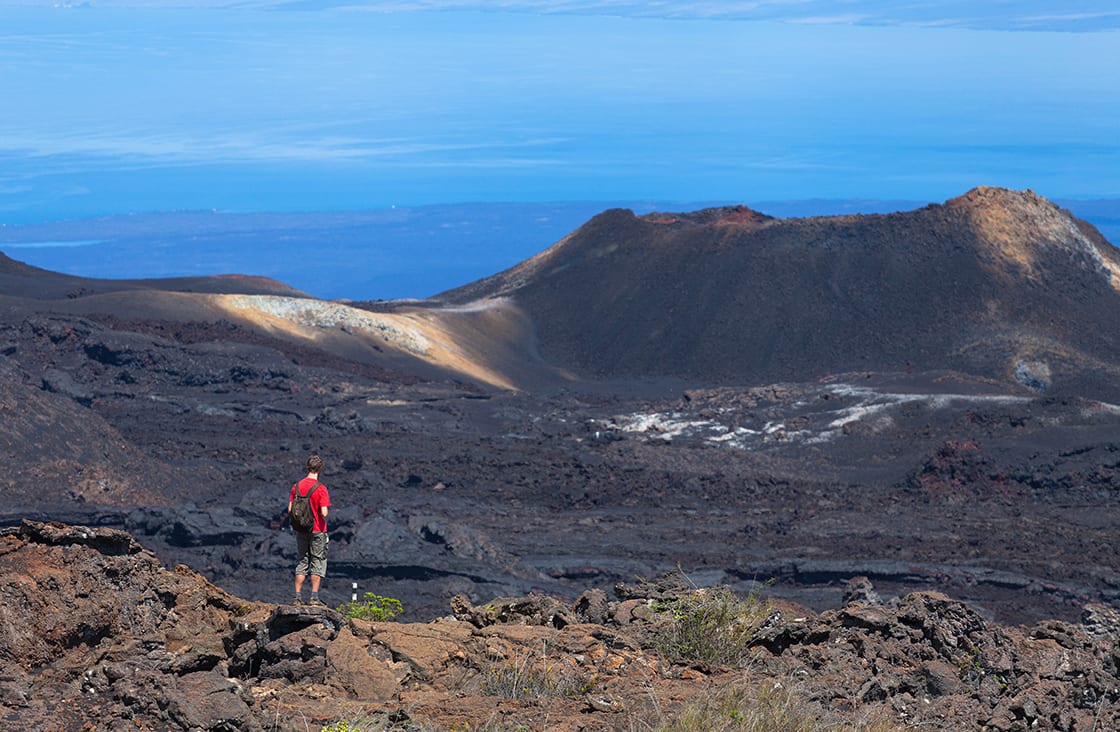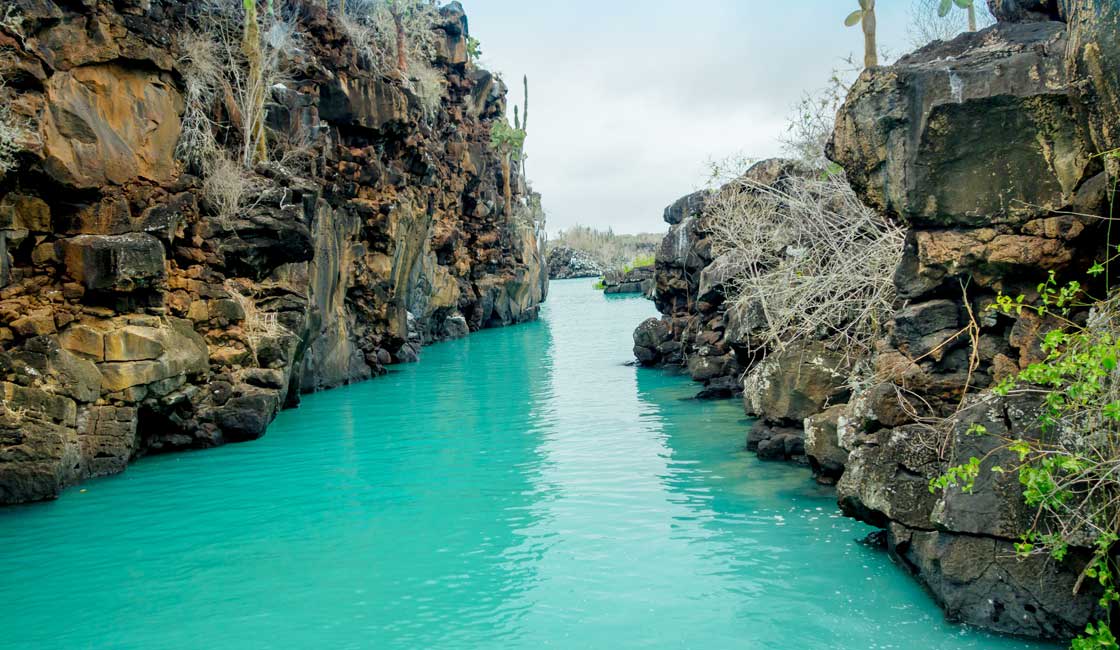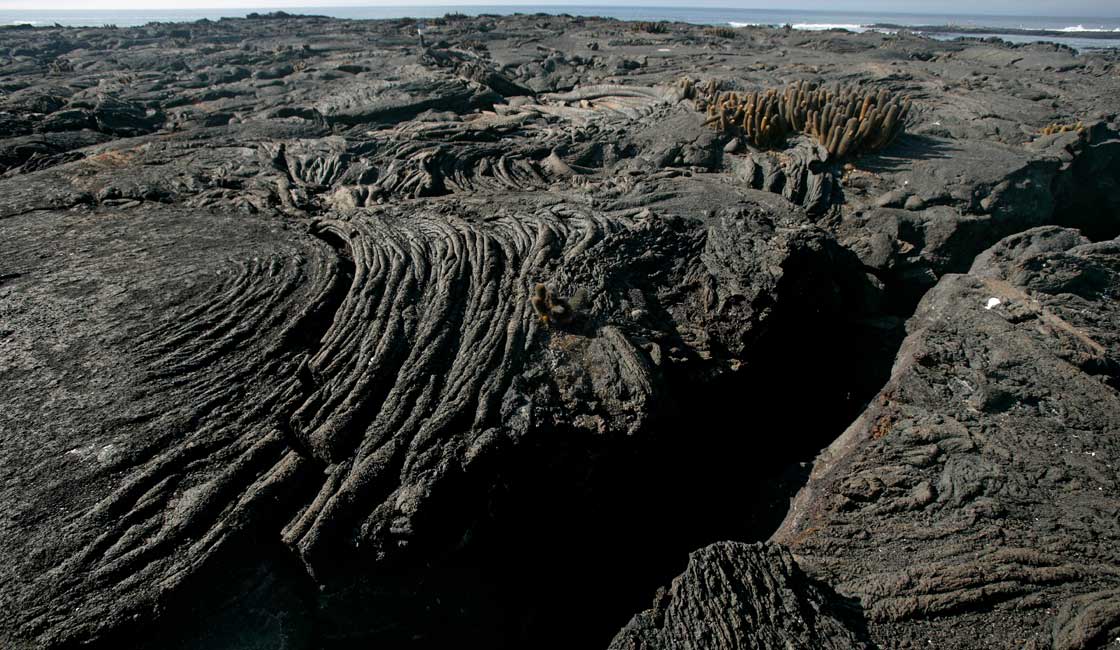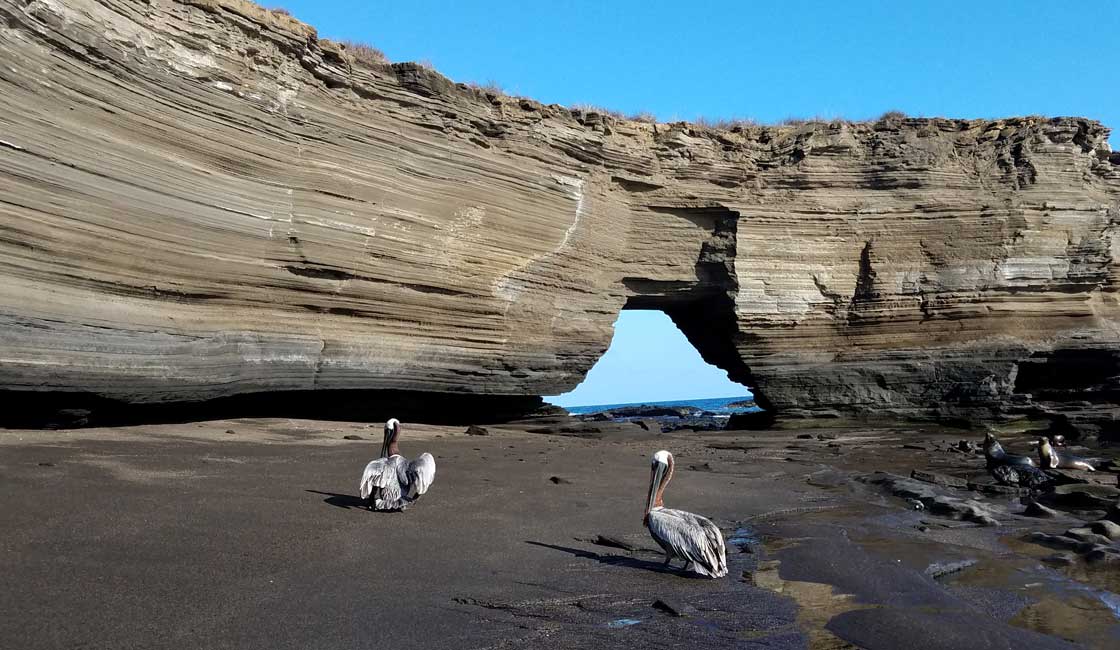
The Galapagos Islands are a group of around 20 islands located far off the shore of Ecuador and home to an astonishingly beautiful and diverse collection of landscapes, flora and wildlife like nowhere else on Earth. Cruising the islands, you’ll immediately be struck by just how unique each one of them is. From lush dense forests and mature mountainous landscapes of some, through to steaming volcanic peaks and otherworldly lava fields found on others. But just how did these isolated islands come to be? And volcanic activity what explains the captivating geological and natural diversity that we see today?

Las Grietas “Crack”
The Galapagos Islands lie on the Nazca tectonic plate, which gradually shifts toward the South American plate at a rate of about 5 cm per year. As these plates move and interact, friction creates weak spots, allowing mantle plumes to rise and melt sections of the Earth’s crust. Sometimes, lava reaches the surface, forming volcanoes and, over time, entire islands.
This tectonic positioning explains the Galapagos’s long and turbulent volcanic history. In fact, the region has experienced roughly 50 eruptions over the past two centuries. These eruptions, while potentially threatening to the fragile ecosystems, have created new land, perpetuating the cycle of island formation over millennia.
The intense volcanic activity involves layering and lifting the Earth’s surface, giving rise to islands above the Pacific Ocean. Most Galapagos Islands are single shield-type volcanoes, except for the largest island, Isabela, which comprises six volcanoes that merged. These islands typically feature conical shapes with steep slopes rising dramatically from sea level.

Not all tectonic plate divisions experience the intense volcanic activity seen in the Galapagos.
This is because the Galapagos Islands are located above “hotspots” which, as the name suggests, are particularly hot areas of the Earth’s mantle that create rising thermal plumes. These plumes easily burn and melt through the Earth’s crust, creating magma that erupts to the surface.
As the name also implies, these “hotspots” are stationary. But because the tectonic plates they are situated beneath are continually moving – however slowly – islands arise in different spots on the Earth’s surface, creating the false impression that it is the hotspots themselves that are moving.

Geological Erosion
The combination of static hot spots beneath shifting plates explains how an entire archipelago was created, as well as the distinctive landscapes and unique ecology of each island. The layout of the islands reflects the speed and direction of the tectonic plate movement. The plates are moving in an east-southeast direction like a conveyor belt, so the more easterly islands were formed first and are millions of years older than the western islands. The Galapagos hot spot is located in the north-western part of the archipelago. It is currently beneath Fernandina and Isabela islands, which were both formed less than a million years ago and are subject to recent volcanic activity.
Eastern Islands (including Genovesa, Floreana, San Cristobal, and Espanola) have had more time to develop vegetation and are therefore much more verdant than those to the west (such as Isabela, Santiago, and Bartolome) that are rockier, barer, and more otherworldly by comparison. The more easterly islands are also smaller and some have even been partially or completely lost under the ocean through erosion by the sea. Meanwhile, the younger islands to the West are larger because they have witnessed volcanic eruptions much more recently, including up to the present day.
The stunning Galapagos are not only well worth visiting for their world-famous flora and fauna, which makes them the perfect destination for vacations. The formation and evolution of these islands over millions of years is a fascinating microcosm of the Earth’s internal geological processes, as well as a testament to the awe-inspiring power and beauty that results. Read our previous blog post to find out Who Discovered the Galapagos Islands. For more information about booking a Galapagos Tour, contact us or call 1-888-215-3555.
While Rainforest Cruises aim to provide accurate and up-to-date information, we make no representations as to the accuracy or completeness of any information herein or found by following any link on this site. Rainforest Cruises cannot and will not accept responsibility for any omissions or inaccuracies, or for any consequences arising therefrom, including any losses, injuries, or damages resulting from the display or use of this information.




